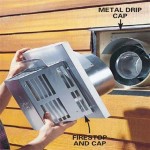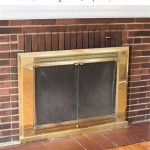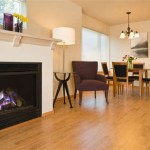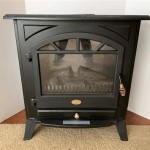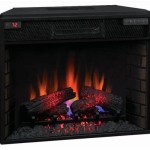Fireplace with Glass Tile: A Comprehensive Guide
A fireplace serves as a focal point in a living space, providing warmth and aesthetic appeal. The choice of materials used in its construction significantly impacts its overall look and functionality. Glass tile, with its versatility and modern appeal, has become an increasingly popular option for fireplace surrounds and hearths. This article explores the various aspects of using glass tile for fireplaces, including its benefits, design considerations, installation guidelines, and maintenance tips.
Aesthetic Advantages of Glass Tile
Glass tile offers a wide array of design possibilities, making it suitable for diverse architectural styles. Its reflective properties enhance the visual brightness of a room, especially when paired with ample lighting. The smooth, non-porous surface of glass tile is available in numerous colors, shapes, and sizes, enabling homeowners to create customized fireplace designs that align with their personal preferences and décor.
One of the primary aesthetic advantages of glass tile is its ability to mimic the appearance of other materials, such as natural stone or marble, without the associated cost or maintenance requirements. Frosted glass tiles can provide a subtle, diffused look, while iridescent tiles create a dynamic, shimmering effect. The transparency of some glass tiles allows for the incorporation of backlighting, adding an extra layer of visual interest to the fireplace.
The versatility of glass tile extends to its ability to be used in various design schemes, from contemporary and minimalist to traditional and rustic. Smaller mosaic tiles offer intricate patterns, while larger format tiles provide a sleek, streamlined appearance. The choice of grout color also plays a significant role in the overall aesthetic, with contrasting grout highlighting the individual tiles and matching grout creating a more seamless look.
Moreover, the reflective nature of glass tile can visually expand a room, especially in smaller spaces. The light reflecting off the glass surface creates an illusion of greater depth and dimension, making the fireplace appear more prominent and impactful. This is particularly beneficial in rooms with limited natural light, as the glass tile helps to brighten the space.
Practical Benefits of Glass Tile for Fireplaces
Beyond its aesthetic appeal, glass tile offers several practical advantages for fireplace applications. Its non-porous surface makes it resistant to stains, water damage, and mold growth, ensuring long-term durability and ease of maintenance. Unlike porous materials such as natural stone, glass tile does not require sealing and can be easily cleaned with standard household cleaners.
Glass tile is also relatively heat-resistant, making it suitable for use around fireplaces. While direct exposure to extreme heat should be avoided, glass tile can withstand the radiant heat generated by a properly functioning fireplace. It is important to select glass tiles specifically designed for fireplace applications, as some types of glass may not be suitable for high-temperature environments.
Furthermore, glass tile is a sustainable and eco-friendly material. Many glass tiles are made from recycled glass, reducing waste and conserving natural resources. The durability of glass tile also contributes to its sustainability, as it requires less frequent replacement compared to other materials. This long lifespan translates to reduced environmental impact over time.
The ease of installation is another practical benefit of glass tile. While professional installation is recommended for optimal results, experienced DIYers can install glass tile with the appropriate tools and techniques. The lightweight nature of glass tile also makes it easier to handle and install compared to heavier materials such as stone or concrete.
Another key advantage of using glass tile is its resistance to discoloration. Unlike some natural stones which can fade or change color over time due to exposure to heat or sunlight, glass tile maintains its original color and finish for many years. This ensures that the fireplace continues to look its best with minimal maintenance.
Installation Considerations for Fireplace Glass Tile
Proper installation is crucial for ensuring the longevity and performance of a glass tile fireplace. The substrate, or the surface onto which the tiles are installed, must be clean, level, and structurally sound. A cement backer board is typically recommended as a substrate for fireplace applications, as it provides a stable and fire-resistant surface.
The selection of the appropriate adhesive is also critical. A high-quality mortar specifically designed for glass tile should be used to ensure proper adhesion and prevent cracking. The mortar should be applied evenly to the substrate using a notched trowel, creating ridges that allow for proper tile adhesion.
When cutting glass tile, a wet saw with a diamond blade is essential to prevent chipping and breakage. The edges of the tiles should be carefully smoothed after cutting to ensure a clean and professional finish. It is also important to wear appropriate safety gear, such as safety glasses and gloves, when working with glass tile and cutting tools.
Grouting is another important step in the installation process. The grout should be applied evenly to the joints between the tiles, and any excess grout should be removed with a damp sponge. The choice of grout color can significantly impact the overall look of the fireplace, so it is important to select a grout color that complements the tile and the surrounding décor.
After the grout has cured, a sealer can be applied to protect the grout from stains and moisture. While glass tile itself is non-porous, the grout is susceptible to staining, so sealing the grout is recommended. Regular maintenance, such as cleaning with a mild detergent and water, will help to keep the glass tile fireplace looking its best for many years.
For fireplaces that burn wood, consider the proximity of the wood-burning fire to the glass tile. While glass tile is heat resistant, prolonged exposure to extremely high temperatures could cause damage. Installing a fire-resistant barrier, such as a metal screen or a non-combustible material between the fire and the tile, can help to mitigate this risk.
Finally, it is advisable to consult with a qualified professional before undertaking a glass tile fireplace installation. A professional can provide expert advice on material selection, installation techniques, and safety considerations, ensuring a successful and long-lasting result.
Maintenance and Cleaning of Glass Tile Fireplaces
Maintaining a glass tile fireplace is generally straightforward, thanks to the non-porous nature of the material. Regular cleaning with a mild detergent and water is typically sufficient to remove dirt, dust, and grime. Avoid using abrasive cleaners or scouring pads, as these can scratch the surface of the glass tile.
For stubborn stains or buildup, a solution of vinegar and water can be used. Apply the solution to the affected area and let it sit for a few minutes before wiping it clean with a damp cloth. Always rinse the area thoroughly with clean water to remove any residue from the cleaning solution.
The grout joints between the tiles are more susceptible to staining than the glass tile itself. To prevent grout stains, consider applying a grout sealer after the installation is complete. This will create a protective barrier that repels water and stains, making the grout easier to clean. Reapplication of the grout sealer may be necessary periodically, depending on the frequency of use and the type of sealant used.
Regular inspection of the glass tile and grout is also important. Look for any signs of cracks, chips, or loose tiles. Addressing any issues promptly will help to prevent further damage and ensure the longevity of the fireplace. If any tiles are damaged, they should be replaced as soon as possible to maintain the aesthetic appeal and structural integrity of the fireplace.
For fireplaces that are frequently used, consider using a fireplace screen to protect the glass tile from soot and ash. This will help to reduce the amount of cleaning required and prevent the glass tile from becoming discolored over time. The screen should be placed a safe distance from the fire to prevent overheating.
In areas with hard water, mineral deposits can build up on the surface of the glass tile. To remove these deposits, a solution of lemon juice and water can be used. Apply the solution to the affected area and let it sit for a few minutes before wiping it clean with a damp cloth. Always rinse the area thoroughly with clean water to remove any residue from the cleaning solution.
By following these simple maintenance and cleaning tips, homeowners can ensure that their glass tile fireplace remains a beautiful and functional focal point in their living space for many years to come.

Updated Fireplace Grey Amp Black Glass Tile Decor Home

Blue And Gray Glass Tile Fireplace Surround Cottage Living Room Surrounds Rooms

14 Fresh Designs For Tiled Fireplaces Bob Vila

Glass Tile Fireplace Watertown Stone

Glass Tile Fireplace Watertown Stone

Glass Tile Fireplace Surround Design Ideas

Modern White Marble Glass Kitchen Backsplash Tile Com Fireplace Surround

How To Tile A Fireplace Even If It S Brick The Handyman Daughter

Mosaic Tile Fireplace Design Inspiration Granite Transformations

Fireplace Tile Design Westside And Stone
Related Posts



